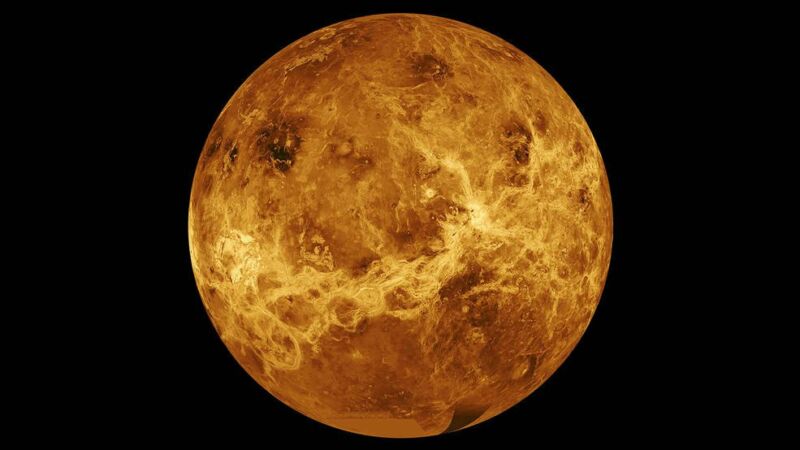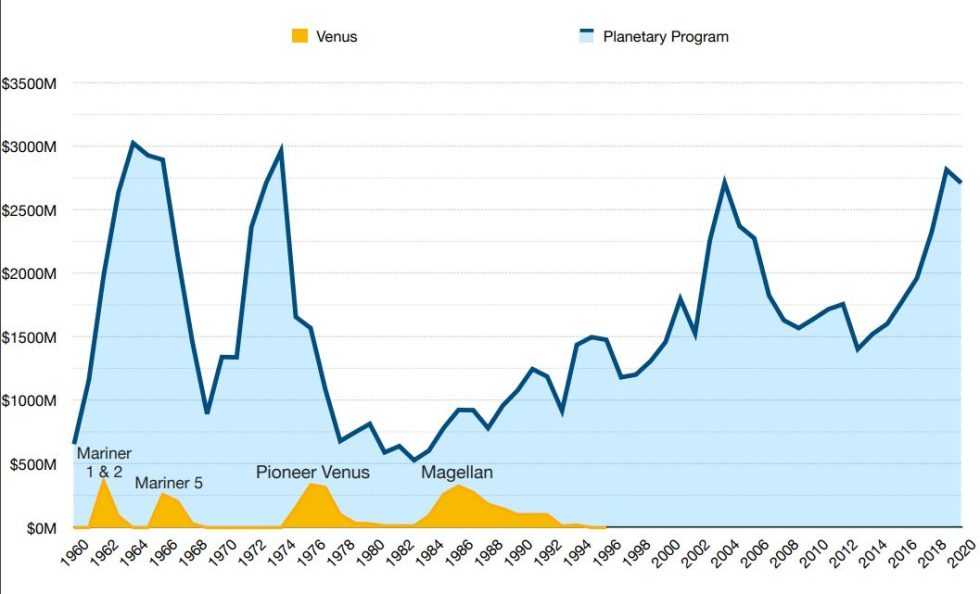
NASA announced Wednesday that it will send, not one, but two spacecraft to Venus this decade as part of its efforts to ramp up exploration of the closest planet to Earth.
The decision was hailed by scientists who study Venus and have felt neglected by a space agency decidedly more interested in Mars. NASA has not sent a robotic spacecraft to Venus since the launch of the Magellan orbiter in 1989. Launched by space shuttle Atlantis, Magellan made a controlled entry into the Venusian atmosphere in 1994 after collecting reams of data that have tantalized scientists ever since.
"The Venus community is absolutely elated and excited and wants to just get to work and see this happen," said Venus researcher Ellen Stofan, the Smithsonian Under Secretary for Science and Research, in an interview. "We all are so hungry for data, for moving the science forward. A lot of us worked in this field since Magellan. We've had these really fundamental science questions for so long."
The missions, named DAVINCI+ and VERITAS, have a cost cap of $500 million apiece and were selected as part of NASA's "Discovery" program. Two other finalists in the competition, an Io Volcano Observer and a mission to Neptune's icy moon Triton, will be eligible for future awards.
NASA scientists said the two Venus missions were selected on their merits, scoring highest on the agency's assessments. Although both are going to Venus, each mission is different from the other and will provide complementary data.
The DAVINCI+ mission will be the first NASA probe to sample the Venusian atmosphere since 1978. The space agency said DAVINCI+ will study how the atmosphere formed and evolved as well as determine whether the planet ever had an ocean. It will also carry a "descent sphere" that will plunge through the planet’s thick atmosphere, making precise measurements of noble gases and other elements to understand why Venus' atmosphere is a runaway hothouse compared the Earth's. This sphere will return the first high-resolution pictures of the unique geological features on Venus known as "tesserae," which may be comparable to Earth's continents.
VERITAS, by contrast, will map Venus' surface to determine the planet's geologic history and understand why it developed so differently than Earth. Orbiting Venus with a synthetic aperture radar, the probe will chart surface elevations over nearly the entire planet to create 3D reconstructions of topography and confirm whether processes such as plate tectonics and volcanism are still active on Venus. VERITAS also will map infrared emissions from Venus' surface to map its rock types.
Stofan said the overriding goal of these missions will be to assess how Venus and Earth came to follow such divergent paths in their evolution. Both are of similar size, and while Venus is closer to the Sun, that does not account for the differences in the hellish conditions on the surface of Venus—especially in terms of atmospheric pressure and temperature—compared to Earth.
"If we really understood how Venus and Earth became so different, we would be a lot closer to understanding how common or rare Earths are," Stofan said. This research would greatly inform scientists who are studying Earth-like worlds in the "habitable zone" around other stars, she added.
Both missions are slated to launch during the 2028 to 2030 timeframe, NASA said.

Over its history, NASA has sent many more probes to Mars than Venus. This is because Mars, although it is significantly smaller than Earth, has some common characteristics, including a thin atmosphere and ice at its poles, and imagining humans walking on Mars one day is not farfetched. Venus, not so much.
The disparity in expenditures is striking. According to Casey Dreier of The Planetary Society, through 2020, NASA has spent $3.7 billion (adjusted for inflation) on its Venus missions, compared to $28.5 billion on Mars missions and related programs, out of a total of $96.9 billion for its Planetary Science program.


:format(webp)/cdn.vox-cdn.com/uploads/chorus_image/image/69380472/Venus_NewlyProcessedView.0.jpg)
3175x175(CURRENT).thumb.jpg.b05acc060982b36f5891ba728e6d953c.jpg)

Recommended Comments
There are no comments to display.
Join the conversation
You can post now and register later. If you have an account, sign in now to post with your account.
Note: Your post will require moderator approval before it will be visible.